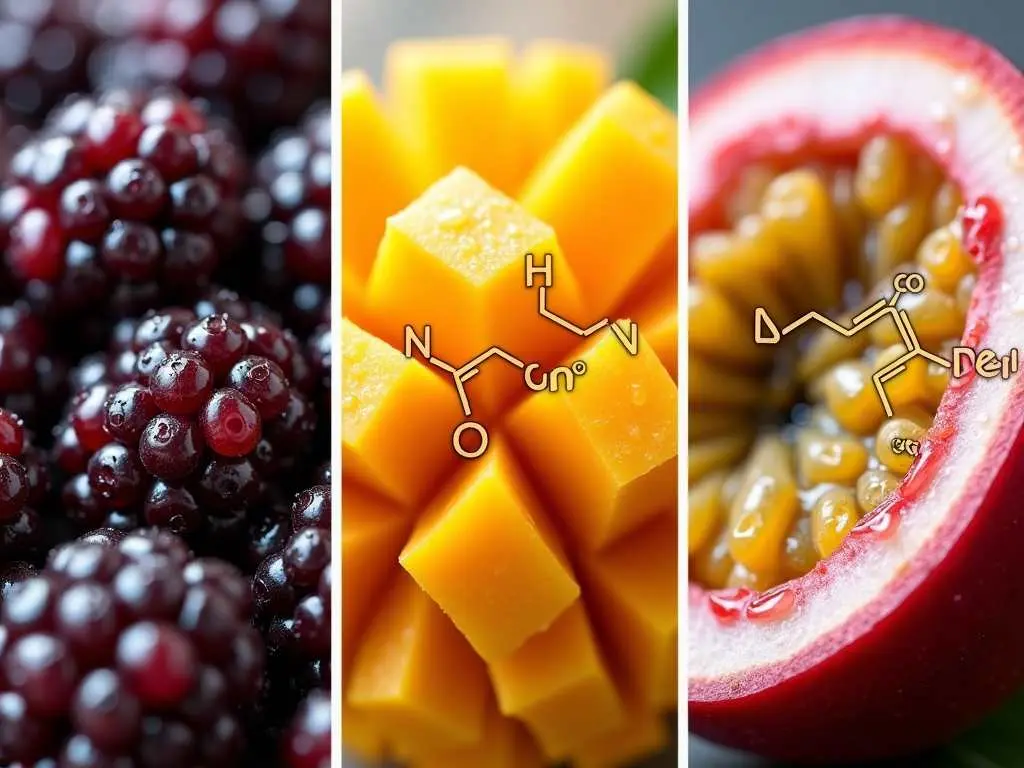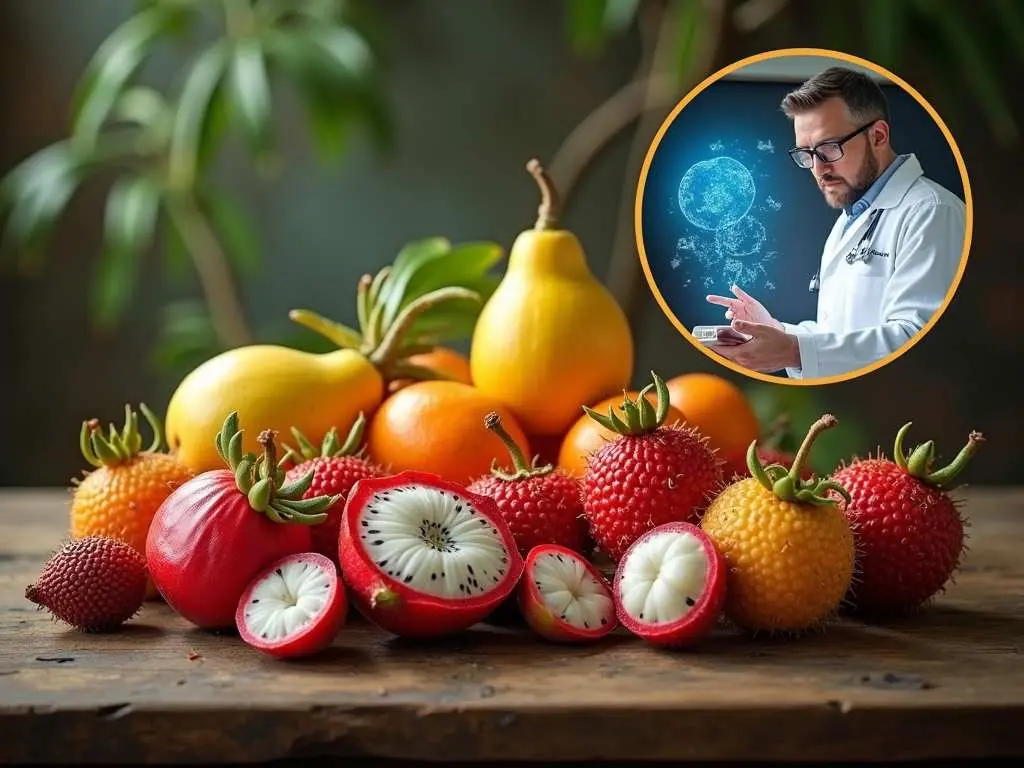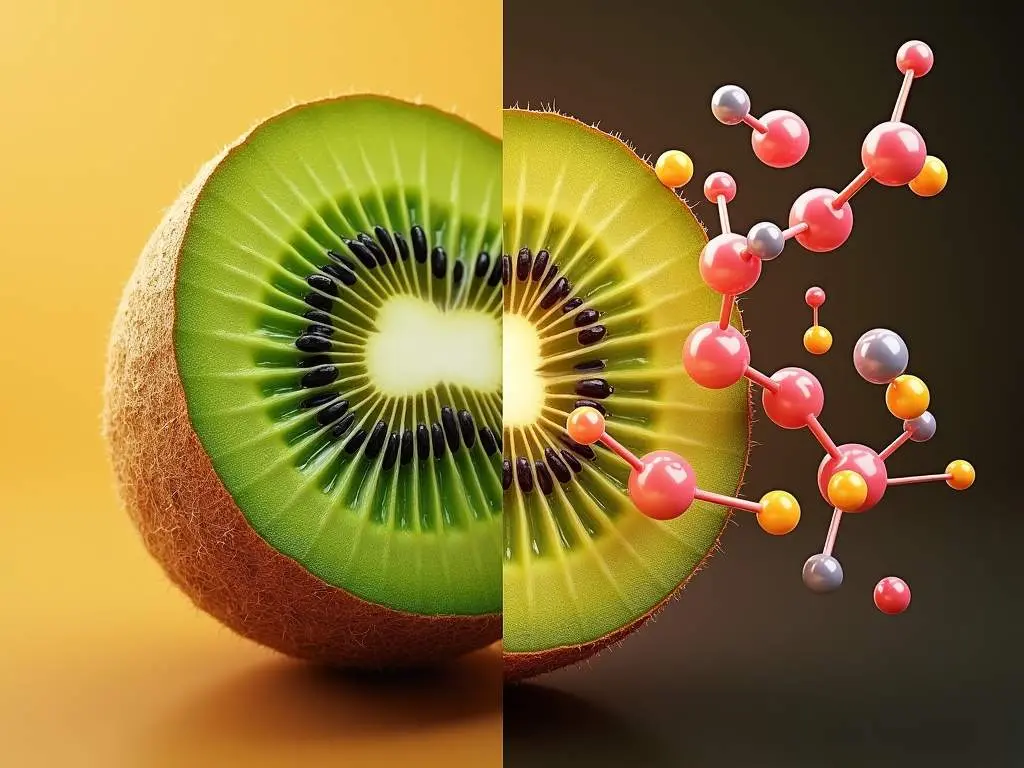As a leading nutritional biochemist specializing in phytochemicals, I’ve conducted extensive research on the relationship between ripeness and bioactive compound concentrations in fruits and vegetables. My work has revealed fascinating insights into how peak ripeness impacts the nutritional profile and potential health benefits of produce.
The Science of Peak Ripeness
Peak ripeness represents the optimal point in a fruit or vegetable’s maturation process when bioactive compounds reach their maximum levels. This critical window varies between species but generally occurs just before full maturity. During this stage, complex biochemical changes result in peak flavor, texture, and nutritional value.
Research has shown that bioactive compound concentrations can fluctuate dramatically based on ripeness. For example, one study on tomatoes found that lycopene content increased by over 300% as the fruits ripened from green to red. Similarly, anthocyanin levels in blackberries were found to increase by 100-fold during ripening.
Key Bioactive Compounds Affected by Ripeness

Several important classes of bioactive compounds are particularly influenced by the ripening process:
Polyphenols
These potent antioxidants tend to peak in concentration just before full ripeness in many fruits. For instance, total phenolic content in strawberries reaches its maximum at the orange-red “breaker” stage before declining slightly as the berries fully ripen.
Carotenoids
Carotenoid levels generally increase steadily throughout the ripening process. Lycopene in tomatoes and beta-carotene in mangoes are prime examples of carotenoids that accumulate as fruits mature.
Vitamin C
Ascorbic acid content often peaks during the later stages of ripening. However, it can decline rapidly after full maturity, making proper harvest timing crucial.
Flavonoids
Many flavonoids like quercetin and kaempferol accumulate during ripening, though some may decrease in overripe fruit.
Factors Influencing Bioactive Compound Accumulation
Several key factors impact the development and concentration of bioactive compounds during ripening:
- Genetics: Different cultivars of the same fruit can vary widely in their bioactive profiles.
- Environmental conditions: Light exposure, temperature, and water availability all influence compound synthesis.
- Agricultural practices: Organic vs. conventional farming methods can affect phytochemical content.
- Post-harvest handling: Proper storage conditions are crucial for preserving bioactive compounds.
Health Benefits of Peak-Ripe Produce
Consuming fruits and vegetables at peak ripeness may offer enhanced health benefits due to their optimized bioactive compound profiles:
Antioxidant Activity
Many bioactive compounds act as powerful antioxidants, helping to neutralize harmful free radicals in the body. Peak-ripe produce often exhibits the highest antioxidant capacity.
Anti-Inflammatory Effects
Certain phytochemicals like anthocyanins and flavonoids have demonstrated anti-inflammatory properties, which may help reduce chronic inflammation associated with various diseases.
Cardiovascular Health
Compounds like lycopene and polyphenols have been linked to improved heart health through mechanisms such as reducing LDL cholesterol oxidation and improving endothelial function.
Cancer Prevention
Some bioactive compounds have shown potential in inhibiting cancer cell growth and reducing tumor formation in laboratory studies.
Maximizing Bioactive Compounds in Your Diet
To harness the full potential of bioactive compounds, consider these strategies:
- Choose locally grown, seasonal produce when possible
- Learn to identify peak ripeness for different fruits and vegetables
- Store produce properly to maintain bioactive compound levels
- Consume a variety of colorful fruits and vegetables
- Incorporate both raw and cooked produce in your diet, as some compounds become more bioavailable with cooking
The Future of Peak Ripeness Research
Ongoing research in this field is exploring several exciting avenues:
- Development of non-destructive ripeness detection technologies
- Genetic engineering to enhance bioactive compound production
- Improved post-harvest treatments to extend the peak ripeness window
- Personalized nutrition recommendations based on individual bioactive compound needs
People Also Ask
Q: How can I tell when a fruit is at peak ripeness?
A: Look for visual cues like color changes, slight softening, and a pleasant aroma. For example, a peach at peak ripeness will have a deep yellow-orange color with no green tinge, yield slightly to gentle pressure, and have a sweet fragrance.
Q: Does cooking affect the bioactive compounds in fruits and vegetables?
A: Cooking can both increase and decrease bioactive compounds depending on the specific compound and cooking method. For instance, lycopene in tomatoes becomes more bioavailable when cooked, while vitamin C can be degraded by heat.
Q: Are frozen fruits and vegetables as nutritious as fresh ones?
A: Frozen produce can be just as nutritious as fresh, and sometimes even more so. Fruits and vegetables destined for freezing are often harvested at peak ripeness and quickly processed, locking in nutrients that might otherwise degrade during transport and storage of fresh produce.
Conclusion

Understanding the science of peak ripeness empowers us to make informed choices about when to harvest, purchase, and consume produce for maximum nutritional benefit. By aligning our diets with nature’s rhythms, we can harness the full potential of bioactive compounds to support our health and well-being. As research in this field continues to advance, we can look forward to even more precise and personalized approaches to optimizing our intake of these vital phytochemicals.
References
- Raffo, A., et al. (2002). Nutritional value of cherry tomatoes (Lycopersicon esculentum Cv. Naomi F1) harvested at different ripening stages. Journal of Agricultural and Food Chemistry, 50(22), 6550-6556.
- Siriwoharn, T., et al. (2004). Influence of cultivar, maturity, and sampling on blackberry (Rubus L. Hybrids) anthocyanins, polyphenolics, and antioxidant properties. Journal of Agricultural and Food Chemistry, 52(26), 8021-8030.
- Kushwaha, R., & Singh, S. (2020). Variation of Bioactive Compounds and Antioxidant Activity during Ripening of Tomato (Solanum lycopersicum L.) Cultivars. Journal of Food and Agriculture Research, 28(2), 15-26.


